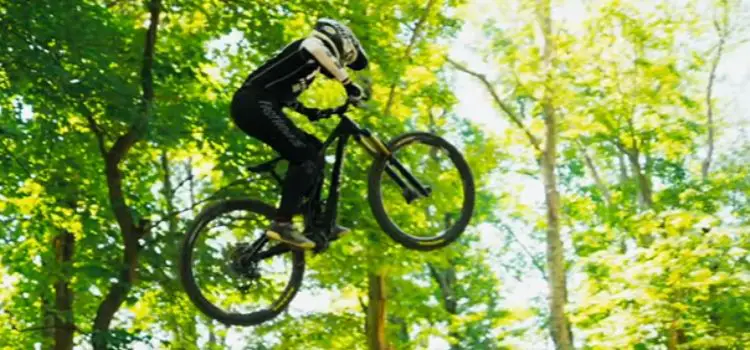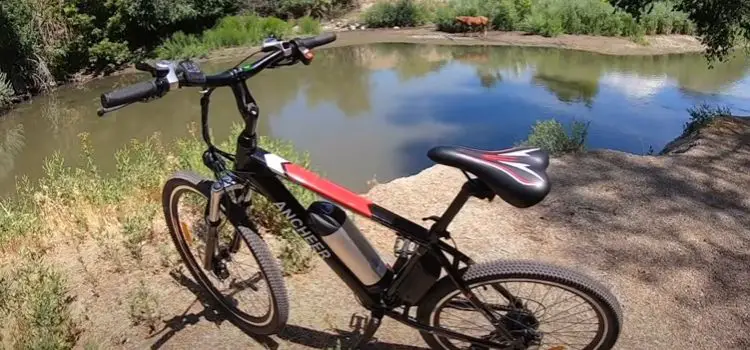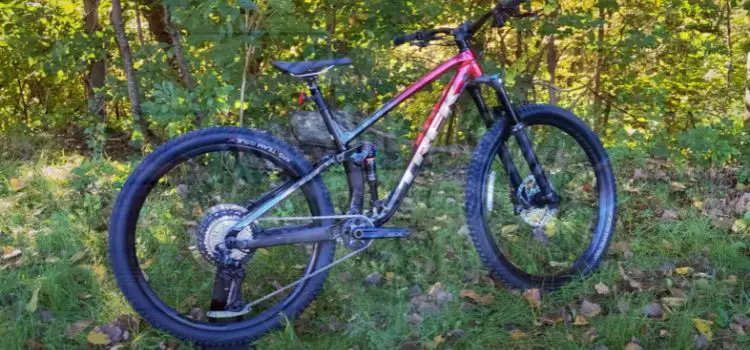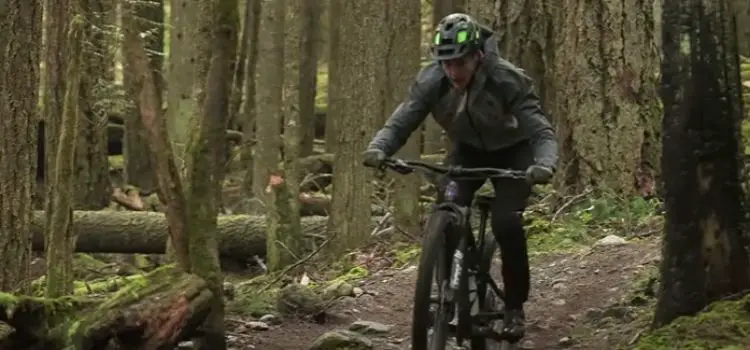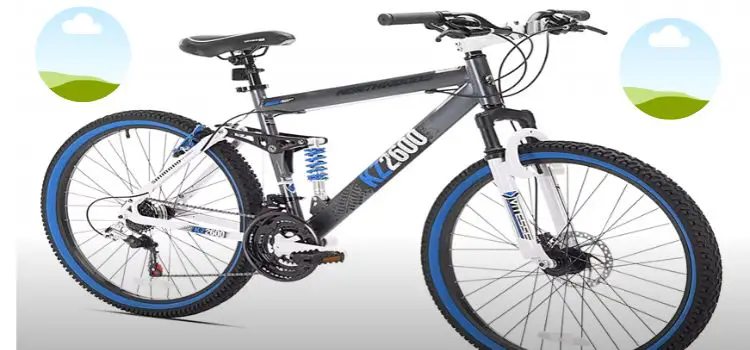Trek vs. Giant Mountain Bikes: A Detailed Comparison!
As an Amazon Associate I earn from qualifying purchases.
Mountain biking enthusiasts often find themselves at a crossroads when deciding between two industry giants: Trek and Giant.
The rivalry between these two brands has fueled innovation and provided riders with an array of choices.
In this comprehensive comparison, we will delve deep into the world of Trek vs. Giant mountain bikes. Exploring their strengths, weaknesses, and what sets them apart on the rugged trails.
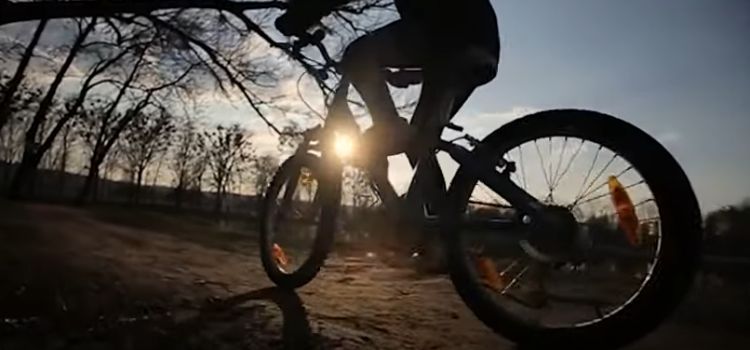
A Brief Overview of Trek and Giant Mountain Bikes
Before we plunge into the intricate details of their mountain bike offerings, let’s take a moment to understand the ethos of these two bike manufacturers.
Trek
As a prominent American brand, Trek has earned its stripes as a leader in the cycling industry. Known for pushing the boundaries of innovation, Trek has consistently produced high-performance mountain bikes that cater to both seasoned riders and novices. With a wide range of models designed for various terrains, Trek’s mountain bikes are synonymous with durability, precision, and cutting-edge technology.
Giant
Hailing from Taiwan, Giant stands as the world’s largest bicycle manufacturer. Renowned for its commitment to providing quality bikes at affordable prices, Giant has a strong global presence. In the realm of mountain biking, Giant has made a mark with its diverse lineup, focusing on delivering reliable and comfortable rides. Giant’s emphasis on accessibility without compromising on performance has garnered a loyal fan base.
Product range and diversity
When it comes to mountain biking, the breadth and depth of a brand’s product range can significantly influence a rider’s choice. Let’s explore how Trek and Giant stack up against each other in terms of their mountain bike offerings.
Trek
Trek’s mountain bike lineup is extensive, catering to various riding styles and preferences. From cross-country to downhill, Trek has a model for every type of mountain biking enthusiast. The Fuel EX series is celebrated for its versatility, offering a balanced blend of trail efficiency and downhill prowess. For those who crave adrenaline-pumping descents, the Trek Slash series stands out as a formidable choice.
Trek’s commitment to innovation is evident in features like the ABP (Active Braking Pivot) system, which enhances suspension performance during braking. The incorporation of technologies like RE:aktiv and Full Floater showcases Trek’s dedication to providing riders with a superior mountain biking experience.
Giant
Giant, too, boasts a diverse range of mountain bikes that caters to a wide audience. From the cross-country-focused Anthem series to the all-mountain Trance lineup, Giant offers models that align with different riding preferences. The Maestro suspension system, a proprietary technology from Giant, is a key highlight in many of their mountain bikes, providing efficient and responsive suspension.
Giant’s mountain bikes often feature a comfortable yet performance-oriented design, making them accessible to a broader spectrum of riders. The Trance series, in particular, has gained acclaim for its well-rounded capabilities, making it suitable for both climbing and descending.
Frame Materials and Construction
The choice of frame material can significantly impact a mountain bike’s performance, weight, and durability. Let’s delve into the materials used by Trek and Giant in crafting their mountain bike frames.
Trek
Trek is renowned for its use of high-quality materials, with a focus on carbon fiber and aluminum. The OCLV (Optimum Compaction Low Void) carbon employed in many of Trek’s mountain bikes ensures a robust yet lightweight frame. For models like the Trek Top Fuel, the use of Alpha Platinum Aluminum strikes a balance between strength and weight, providing a reliable platform for aggressive trail riding.
In the pursuit of optimal aerodynamics, some Trek frames undergo wind tunnel testing, reflecting the brand’s commitment to enhancing both performance and efficiency.
Giant
Giant’s mountain bike frames often utilize Advanced-Grade Composite, a form of carbon fiber that combines lightness with durability. The Modified Monocoque Construction, found in certain Giant models, involves molding the front triangle as a single piece, enhancing overall frame strength and stiffness.
Giant also offers mountain bike frames crafted from aluminum alloy, providing a more budget-friendly option without compromising on performance. The brand’s roots as an Original Equipment Manufacturer (OEM) contribute to its expertise in frame construction.
Suspension Systems and Riding Experience
A mountain bike’s suspension system plays a pivotal role in how it handles diverse terrains. Both Trek and Giant have developed proprietary suspension technologies to elevate the riding experience.
Trek
Trek’s mastery of suspension systems is evident in its use of technologies like Full Floater and RE:aktiv. The Full Floater system contributes to responsive and nimble suspension, providing a feeling of bottomless travel on rough terrain. For road biking enthusiasts, Trek’s IsoSpeed technology decouples the seat tube from the top tube, reducing fatigue during long rides.
The RE:aktiv suspension system adapts to varying terrains with effective damping and low shaft velocity, ensuring a smooth and controlled ride even in challenging conditions.
Giant
Giant’s Maestro Full Suspension System is a hallmark of its mountain bikes, especially in the realm of off-road and trail riding. This system strategically places pivot points and linkages to create a single floating point, minimizing suspension compression and enhancing overall control.
In certain models, Giant employs the Flexpoint Suspension system, offering benefits akin to those of a multi-link system without the added complexity and maintenance requirements. The result is a well-balanced suspension that caters to a wide range of riders.
Brakes and Componentry
Braking systems are critical for the safety and control of mountain bikes, and the choice of components can influence the overall performance. Let’s explore how Trek and Giant approach brakes and componentry in their mountain bike designs.
Trek
Trek has been a trailblazer in addressing the challenges of braking and suspension interaction. The patented Active Braking Pivot (ABP) system, introduced by Trek, revolutionized the industry. This system allows the suspension to function optimally during braking, reducing unintentional skidding and enhancing overall rider confidence.
Hydraulic disc brakes are a common sight on Trek’s mountain bikes, providing efficient and reliable stopping power. The use of high-quality components, such as those from SRAM and Shimano, ensures a consistent and responsive braking experience.
Giant
Giant’s mountain bikes also feature hydraulic disc brakes, underscoring the industry-wide consensus on the effectiveness of this braking system. The focus on reliable braking is crucial for riders navigating challenging descents and varied terrains.
Giant’s commitment to quality components extends to its drivetrain and gear systems. While mid-range models may feature Shimano components, higher-end models might incorporate the SRAM RED eTap AXS Groupset, showcasing Giant’s dedication to offering a diverse range of choices for riders.
Performance on the Trails
Ultimately, the true test of a mountain bike’s worth is its performance on the trails. How do Trek and Giant fare when it comes to real-world mountain biking scenarios?
Trek
Trek’s mountain bikes, with their emphasis on high-performance and innovation, are often favored by riders who seek aggressive trail experiences. The superior rear suspension in models like the Slash series allows riders to conquer diverse terrains without sacrificing comfort. Trek’s reputation for producing reliable racing bikes is reflected in its consistent wins on pro-cycling circuits.
For riders who prioritize performance and are willing to invest in top-of-the-line models, Trek stands as a beacon of excellence in the mountain biking world.
Giant
Giant’s mountain bikes are lauded for their well-rounded performance, catering to a broader audience that includes both recreational riders and enthusiasts. The comfort-oriented design, especially in the Trance series, makes Giant bikes suitable for extended rides and varied terrains.
While Giant may not dominate the pro-cycling scene as extensively as Trek, it excels in delivering a comfortable and enjoyable riding experience. Giant’s focus on producing affordable-quality bikes for a diverse range of riders has contributed to its popularity among the mountain biking community.
E-bikes
With the rise of electric-assist technology, both Trek and Giant have incorporated e-bikes into their lineups. How do their electric offerings compare, and what sets them apart in the realm of electric mountain biking?
Trek
Trek’s e-bike lineup is extensive, catering to a wide range of preferences and riding styles. Models like the Powerfly series, equipped with Bosch mid-drive motors, deliver a powerful and efficient pedal-assist experience. The inclusion of technologies like IsoStrut and Energy Pak Battery Systems showcases Trek’s commitment to pushing the boundaries of e-bike innovation.
Trek’s dominance in the e-mountain bike category is exemplified by the variety of models, including the Rail, E-Caliber, and Domane+, each designed to provide a unique riding experience for electric-assist enthusiasts.
Giant
Giant’s foray into e-bikes is marked by a diverse range that mirrors its non-electric lineup. The SyncDrive motor, powered by Yamaha, is a common sight in Giant’s e-bike models, offering a seamless and responsive pedal-assist experience.
Giant’s electric mountain bikes, such as the Trance X E+ Pro 29 and Revolt E+, provide riders with the option to explore trails with the added assistance of electric power. The recently introduced Reign E+ 0 (2022) with a 750Wh battery showcases Giant’s commitment to staying at the forefront of e-bike technology.
Gravel Bikes
For riders who seek adventure beyond traditional mountain biking trails, gravel bikes offer a versatile option. How do Trek and Giant fare in the realm of gravel biking?
Trek
Trek’s gravel bike lineup, including models like the Checkpoint, is designed for those who crave exploration on mixed terrains. The Checkpoint SLR 9 eTap is a standout model, known for its versatility and performance on gravel paths and tarmac.
Trek’s approach to gravel biking involves integrating technologies like IsoSpeed, ensuring a smooth and comfortable ride even on rough surfaces. The emphasis on innovation extends to gravel biking, making Trek a contender for riders who seek adventure beyond the beaten path.
Giant
Giant’s contribution to the gravel bike category is exemplified by models like the Revolt Advanced Pro (2022). While Giant may not have the same level of specialization in gravel biking as Trek, the Revolt series offers a solid and reliable platform for riders exploring diverse terrains.
Giant’s gravel bikes are often recognized for their affordability and practicality, making them accessible to a wide range of riders looking to venture into the world of gravel biking.
Price Comparison of Trek vs. Giant Mountain Bikes
One of the decisive factors for many riders is the price point. How do Trek and Giant stack up in terms of pricing, and what factors contribute to the variations in cost?
Trek
Trek’s mountain bikes, with their focus on high-performance and innovative technologies, often come with a higher price tag. The manufacturing of Trek bikes in the United States contributes to the relatively higher cost of components and production. The use of premium materials like OCLV Carbon and advanced suspension systems adds to the overall price.
While Trek does offer a range of bikes at different price points, potential buyers should be prepared to invest more in the top-tier models that boast the latest technologies and materials.
Giant
Giant’s mountain bikes, being manufactured in Taiwan, benefit from a supply chain integrated with mature manufacturing technology. This results in a more cost-effective production process, allowing Giant to offer bikes at a generally lower price point compared to Trek.
The affordability of Giant’s bikes doesn’t imply a compromise on quality. Giant prides itself on delivering quality products to the market at the best possible price, making it an attractive option for riders seeking value for their investment.
Warranty and Customer Service
The assurance of a solid warranty and reliable customer service can significantly influence a rider’s confidence in their chosen brand. How do Trek and Giant compare in terms of warranty coverage and customer support?
Trek
Trek offers a lifetime warranty on frames and forks, demonstrating the brand’s confidence in the durability of their products. In addition to a lifetime frame and fork warranty, Trek provides a two-year warranty on parts, accessories, apparel, and specific components like Bontrager wheels with alloy rims.
Trek’s Carbon Care Warranty allows customers to receive a discount on frame repairs for non-warranty damages, showcasing a commitment to supporting riders throughout their ownership journey.
Giant
Giant’s warranty coverage includes a one-year warranty on original components, paint finish, and all Giant repair parts, accessories, and replacement parts. This warranty applies to the original owner of the bike and reflects Giant’s commitment to standing behind the quality of their products.
While Giant’s warranty does not match the lifetime coverage offered by Trek, it provides a reasonable level of protection for riders, especially within the first year of ownership.
Both Trek and Giant emphasize the importance of bike registration for warranty activation, underscoring the responsibility of the buyer to ensure their new bike is registered promptly.
In terms of customer service, both Trek and Giant have established themselves as industry leaders, offering reliable support through a network of retail outlets and service centers. Trek’s extensive network might provide a slight edge in terms of faster service delivery.
Conclusion
In the epic battle of Trek vs. Giant Mountain Bikes, there’s no clear winner; only a rider’s preference and priorities can determine the better fit. Trek shines as a beacon of innovation and high performance, particularly in the realm of competitive mountain biking. On the other hand, Giant stands out for its affordability, accessibility, and commitment to providing quality rides for a diverse range of enthusiasts.
For riders seeking the pinnacle of performance, technological innovation, and a willingness to invest, Trek stands as a formidable choice. However, if budget considerations play a pivotal role and a comfortable, reliable ride is the primary goal, then Giant emerges as a compelling alternative.
Ultimately, the decision between Trek and Giant boils down to personal preferences, riding style, and the specific features that matter most to individual riders. Whether conquering rugged mountain trails or embarking on gravel adventures, both Trek and Giant offer a wealth of options, ensuring that every rider can find their perfect trail companion. So saddle up, hit the trails, and let the journey begin. Whether it’s on a Trek or a Giant, the thrill of mountain biking awaits.
Amazon and the Amazon logo are trademarks of Amazon.com, Inc, or its affiliates.

